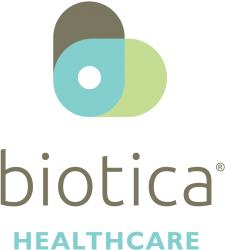Hospital marketing has become a bouillabaisse of technology, social media, marketing automation, traditional tactics, and now AI and even robots! But this richness of ingredients has not brought clarity to our vision. Why? We think it’s the absence of a sustainable brand strategy to synch off- and online marketing with business objectives.
It’s time for healthcare marketers and their advertising agencies to bring the heat.
Most hospitals are neither marketing nor customer driven. The result is the commoditization of care and institutions. Patients make healthcare choices by proximity, and what they’ve turned up on the Internet from Web MD to their Facebook friends.
It’s time for marketers and their ad agencies to bring the heat.
There’s an upside to the educated patient, but not when it supplants the advice of a trained medical professional. Or it’s a decision based on the type of price bashing that’s prevalent in medical devices, medical procedures like and LASIK, and elective cosmetic procedures where physicians compete against each other on price. These are serious medical as well as marketing problems.
Consumers recognize hype and convert it to disbelief and apathy.
In this muck, there’s an opportunity to kick hospital marketing to the next level, one that looks beyond the data to understand the needs of patients, families, and yes, doctors. To achieve this, we need to revisit a few marketing essentials. While tactical options like social media and mobile apps have exploded in the past few years, strategy has been stuck in the mud.
Sustainable Brand Strategy Saves Money, Increases Impact.
Start with strategy. Worry – and I mean heartburn worry – about the strategy. Your goal is to develop a brand differentiation program that’s valid today and five years from now.
There are many formulations for developing a branding strategy, but the most have these touchstones in common:
- Define the barrier to success with specificity, e.g. “patients perceive that we don’t have the most modern equipment.” Not a list of barriers. One. And one that can be solved by marketing.
- Describe your target audience(s> in detail, for example “single parents, 25-55, within a 15-mile radius of our hospital, who are willing to change pediatricians.”
- What do you want to convince them of that will address the marketing problem.” You get one reason. Don’t even think about fudging it, e.g. “we are the most technologically advanced hospital in the tristate.”
- Why should your target audience believe you? There are always multiple solutions, but you need to pick one and run with it. For instance, “In the past 5 years our hospital has spent $100 million on new technology, more than all our competitors combined.”
The result should be a simple paragraph that anyone on your staff can understand and easily remember. Here’s a quick test to see if your strategy is on track:
- Is it true, and is it rooted in the basic values of your institution?
- Is it meaningful to your target audience? Do they really care how much money you spend on equipment? Or do they care about how that equipment can save the life of a loved one?
- Is it competitive? Are there are other hospitals in your market that could just as easily claim your strategy?
- Is it preemptive? Is anyone else currently using your strategy?
- Can you execute? Is it possible to create powerful communication based on this strategy?
Command attention or flush the cash/h2>
Your strategy could be brilliant, but the way you execute it must break through. Otherwise your marketing is nothing but very expensive wallpaper.
So, your next job is to challenge your marketing agency to create its best work ever. Remember, they’ve become risk aversive with your marketing, too. But, if your agency is worth anything, they’ll leap at the opportunity. Give them this charge:
- Your creative must deliver the strategy
- The basic concepts must translate into all media
- Knock their socks off
- Have a conversation, or become irrelevant
Marketing is in transition. The old way is based on telling consumers what the institution wants to say (broadcasting) versus the new path into social and interactive media modeled after conversation.
This isn’t about a matter of placing service line brochures on a website. It’s a sea change in how we think and act as marketers and as a society.
Stay in the loop
I emphasize this isn’t about social media apps like Foursquare or Twitter, it’s about following the classic communication loop, Listen-Process-Respond. Therefore, creative must disrupt its digital or offline media to earn the attention of your potential patients or customer. It must also deliver the meat: Content worth their time to view, read, or listen to. The response comes with engagement on social media, websites, video, and print advertising.
Fakers beware
Consumers recognize hype and convert it to disbelief and apathy. Weed it out of your marketing like poison ivy. Write copy in plain English. Back up your claims. Demonstrate benefits with data. Read comments on your Facebook page, and respond to them. Monitor social media for negative comments. Publicly admit mistakes and correct them. Insert yourself into the conversation. Listen-Process-Respond.
Own your brand
Invest in your brand. Own everything that touches it. That means fonts, layout grid, color, texture, and especially photography. When your brand package is so unique it could only be your company, it’s instantly identifiable even if you can’t see the headline or logo.
Money is tight. Your budget will certainly be cut. But with clear strategic direction, powerful creative, and a new outlook on interaction, your hospital brand will flourish on less.







